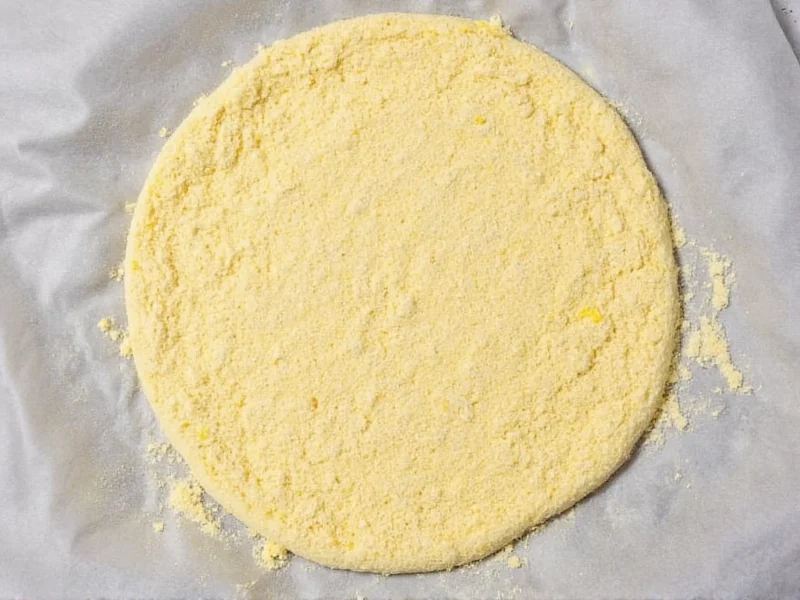Corn meal transforms pizza crust with its unique properties that differ significantly from standard wheat flour. This versatile ingredient, made from dried and ground corn kernels, offers both functional and flavor benefits that have made it a staple in artisanal pizza making. Understanding how to properly utilize corn meal can elevate your homemade pizza from ordinary to exceptional.
The Science Behind Corn Meal in Pizza Making
Corn meal's composition creates distinct advantages for pizza crust. Unlike wheat flour, corn meal contains no gluten, which affects both texture and baking behavior. When used as a dusting on pizza stones or baking surfaces, corn meal creates a protective layer that prevents sticking while adding subtle crunch. When incorporated directly into dough, it contributes to:
- Enhanced crispness in the finished crust
- Improved browning through natural sugars
- Rustic, artisanal appearance
- Subtle sweet corn flavor that complements tomato sauces
- Better moisture resistance in thin-crust applications
Types of Corn Meal for Pizza Crust
Not all corn meal performs equally in pizza applications. The grind size and processing method significantly impact results:
| Type of Corn Meal | Grind Size | Best Pizza Application | Flavor Profile |
|---|---|---|---|
| Stone-ground corn meal | Coarse | Dusting surface, 10-15% dough incorporation | Rustic, pronounced corn flavor |
| Medium grind corn meal | Medium | 20-25% dough incorporation, dusting | Balanced corn flavor |
| Fine corn meal (corn flour) | Fine | Up to 30% dough incorporation | Subtle corn notes, smoother texture |
| Blue corn meal | Varies | 15-20% dough incorporation for visual appeal | Nuttier, earthier flavor |
Optimal Usage Techniques for Corn Meal Pizza Crust
Professional pizzerias employ specific techniques when working with corn meal that home cooks can easily replicate. The two primary applications serve different purposes:
As a Baking Surface Dusting
Using corn meal as a dusting agent on pizza stones or baking steel creates a non-stick barrier while adding texture. For best results:
- Apply a thin, even layer (about 1-2 tablespoons) across your baking surface
- Preheat the surface with the corn meal for 15-20 minutes before baking
- Use coarse or medium grind for optimal performance
- Avoid excessive amounts that could burn during baking
Incorporated into Dough
Adding corn meal directly to pizza dough requires careful formulation to maintain proper structure. Follow these guidelines:
- Substitute 10-25% of total flour weight with corn meal (higher percentages require adjustments)
- Increase hydration by 2-5% as corn meal absorbs more water than wheat flour
- Add vital wheat gluten (0.5-1% of total flour weight) when exceeding 20% corn meal
- Extend fermentation time by 15-20% for better flavor development
- Reduce baking temperature by 25°F (15°C) to prevent premature browning
Corn Meal vs. Alternatives for Pizza Crust
While corn meal offers unique benefits, understanding how it compares to other common pizza crust ingredients helps make informed decisions:
- Semolina: Provides similar non-stick properties but with a finer texture and less pronounced flavor. Better for delicate Neapolitan-style pizzas.
- Regular flour: Creates a more traditional chewy texture but lacks the distinctive crunch corn meal provides. Essential for proper gluten development.
- Corn flour: Finely ground corn meal that incorporates more seamlessly into dough but offers less textural contrast.
- Polenta: Often confused with corn meal but typically coarser and made from different corn varieties. Can be used similarly but may require additional hydration.
Perfect Corn Meal Pizza Crust Recipe
This tested recipe balances traditional pizza elements with corn meal's unique properties. Yields two 12-inch pizzas:
- 300g bread flour (75% of total flour)
- 100g medium grind corn meal (25% of total flour)
- 260g water (65% hydration)
- 7g sea salt
- 2g instant yeast
- 5g vital wheat gluten (optional but recommended)
Method: Combine all ingredients and mix until well incorporated. Knead for 8-10 minutes until smooth. Place in oiled container and ferment at room temperature for 1.5 hours, then refrigerate for 24-72 hours. Divide, shape, and proof at room temperature for 2 hours before stretching and topping. Preheat pizza stone with corn meal dusting at 500°F (260°C) for 1 hour before baking.
Troubleshooting Common Corn Meal Pizza Issues
Even experienced pizza makers encounter challenges when working with corn meal. Here's how to address frequent problems:
- Burning corn meal: Reduce oven temperature slightly and ensure even distribution of a thin layer. Coarse grinds burn less easily than fine.
- Soggy bottom crust: Increase baking surface temperature and ensure proper preheating. Corn meal absorbs moisture, so adequate oven heat is crucial.
- Dough tearing when stretching: Increase hydration slightly or reduce corn meal percentage. Corn meal weakens gluten structure.
- Bland flavor: Use stone-ground corn meal for more pronounced corn flavor or extend fermentation time to develop flavors.
- Excessive crumbling: Don't exceed 30% corn meal in dough formulation without additional binders like vital wheat gluten.
Expert Tips for Perfect Corn Meal Pizza Crust
Professional pizza makers recommend these advanced techniques for optimal results:
- Toast corn meal lightly in a dry skillet before incorporating into dough for enhanced flavor
- Combine corn meal with semolina (50/50) for balanced texture and flavor
- Use masa harina (treated corn flour) for authentic corn flavor with better binding properties
- Apply corn meal dusting immediately before transferring pizza to prevent moisture absorption
- For deep-dish pizzas, press corn meal directly into the pan before adding dough for extra crunch











 浙公网安备
33010002000092号
浙公网安备
33010002000092号 浙B2-20120091-4
浙B2-20120091-4